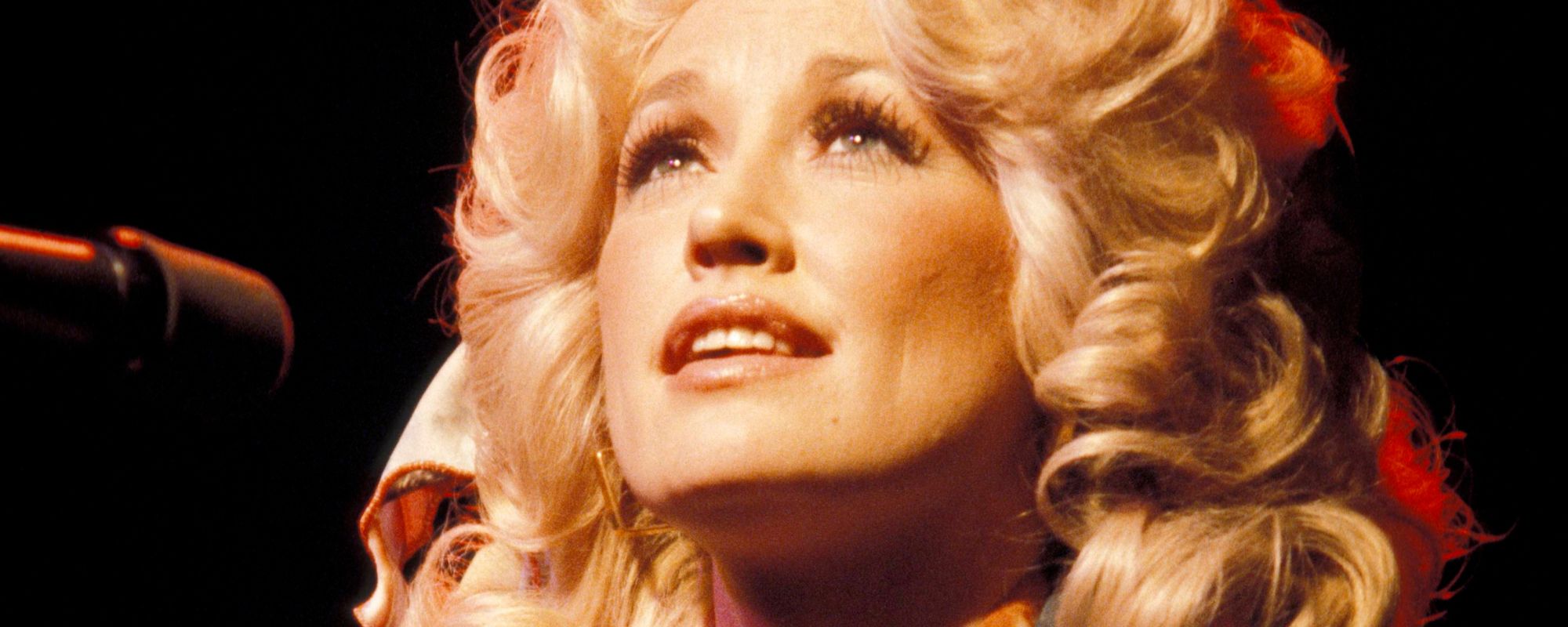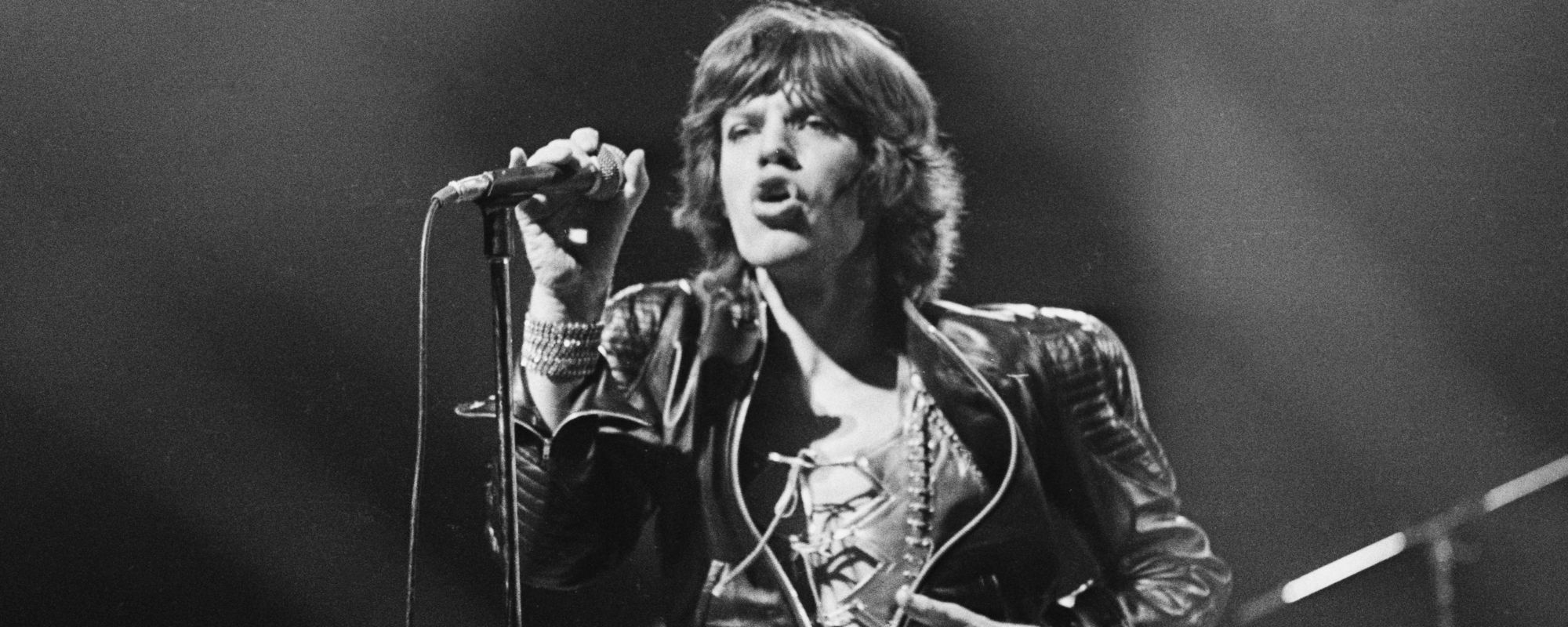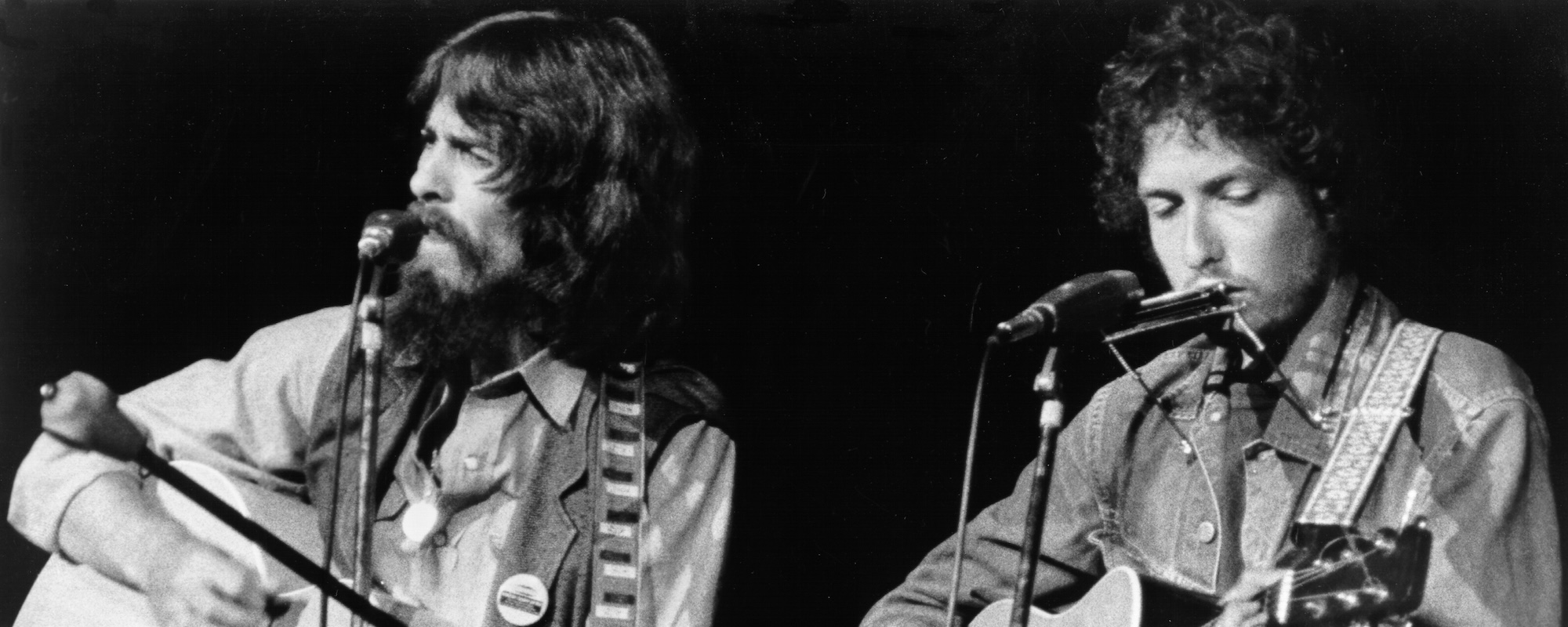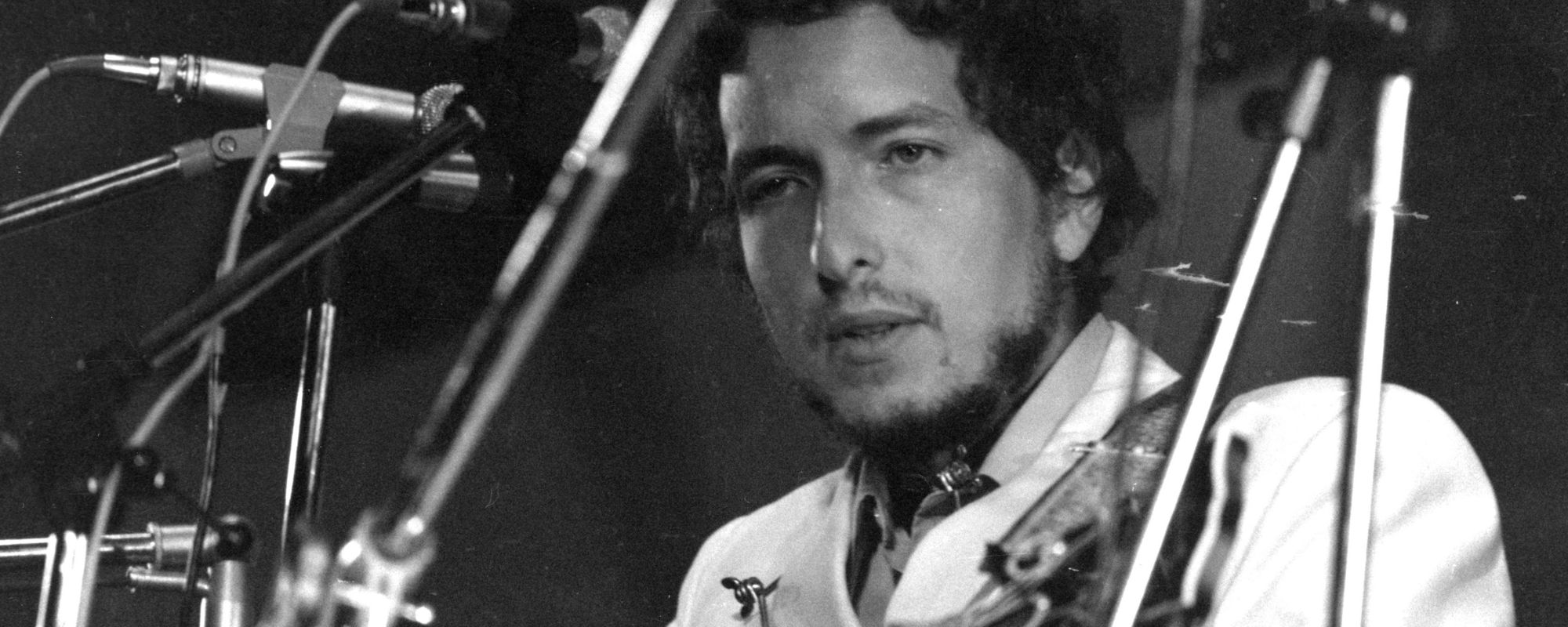Following Bob Dylan’s motorcycle accident in 1966, fans wondered to where their prophet had disappeared.
Videos by American Songwriter
Wild rumors circulated about the missing singer, and some thought the CIA had something to do with Dylan’s absence. Guitarist Robbie Robertson was with Dylan and said he was OK “except he had a big cast around his neck. A brace.”
Robertson had joined Dylan in Woodstock, New York, three months after the accident to work on music. Recovering from their 1966 world tour and the hard living that accompanied it, Dylan and The Band—then known as The Hawks—left New York City to find a better-suited place to record.
Big Pink
“We couldn’t find a place where we could make enough noise,” said Robertson. The guitarist moved in with Dylan, his wife Sara Lownds, and their new family. The rest of The Band gathered in a rental house in West Saugerties, New York: Rick Danko, Richard Manuel, Garth Hudson, and later, Levon Helm.
Locals called the rented house Big Pink because its painted color looked like strawberry ice cream. What transpired at Big Pink became the genesis for The Basement Tapes and the changing sound of rock and roll. If you wanted to distill this period of Dylan’s life in one song, “You Ain’t Goin’ Nowhere” would be it.
Stuck Inside the House
Dylan, sounding loosely resigned, examines his newfound exile. He rejoices in the paradox between freedom and being trapped inside a stoney jam house with friends. Multiple versions of “You Ain’t Goin’ Nowhere” exist with differing lyrics. But a verse from Take 1 neatly describes The Band’s holed-up situation:
Look here, you bunch of basement noise
You ain’t no punching bag
I see you walkin’ out there
And you’re the one to do it
Pick up your nose…
You ain’t goin’ nowhere
However, Dylan’s version wasn’t the first to get an official release. The Byrds covered “You Ain’t Goin’ Nowhere” and released it in 1968. Their cover turns Dylan’s seclusion into a celebration of an idyllic rural life.
Whoo-ee! Ride me high
Tomorrow’s the day
My bride’s gonna come
Oh, oh, are we gonna fly
Down in the easy chair!
The Times They Are A-Changin’
By the time Dylan’s tapes with The Band were officially released, his manager Albert Grossman had already circulated them. In 1967, the recordings arrived in London, where Mick Jagger and Marianne Faithfull received a copy.
Meanwhile, George Harrison had spent time in New York, and the sublime and free-flowing sessions with The Band inspired him to report back to The Beatles what Dylan was up to. The Beatles, at this point, had been arduously working on Let It Be and Harrison experienced a liberating way to make music.
While many rock bands were still enamored with psychedelia, Dylan and The Band had adopted an earthy, roots-based sound. Though Dylan was enjoying a break from fame, the laid-back jam sessions unwittingly shifted the creative course of the world’s leading rock stars.
Americana Bootleg
The pastoral escapism behind “You Ain’t Goin’ Nowhere” and the jam sessions with Dylan eventually led to The Band’s groundbreaking 1968 debut Music from Big Pink.
When Eric Clapton heard the music, he considered what he was doing to be “outdated and boring.” He ended Cream and stripped things down with a new but short-lived supergroup, Blind Faith. And Harrison, following the end of The Beatles, emerged with All Things Must Pass in 1970.
Columbia Records finally released The Basement Tapes in 1975. By then, the bootlegs had already changed rock history and Dylan had moved on.
Photo by Bettmann/Getty Images













Leave a Reply
Only members can comment. Become a member. Already a member? Log in.